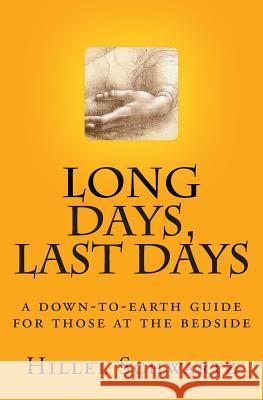Long Days Last Days: a down-to-earth guide for those at the bedside » książka
Long Days Last Days: a down-to-earth guide for those at the bedside
ISBN-13: 9781482785777 / Angielski / Miękka / 2013 / 258 str.
Called to the bedside of someone critically or chronically ill, what should you bring, what can you do, what must you know, what will you say? Likely you've already sat with a grandparent, parent, brother, sister, lover, or friend in a hospital or nursing home and found yourself disturbed by certain medical protocols, mystified by lab reports, frustrated by insurance forms, benumbed by pharmocracy, thinking taboo thoughts about life or loss, and yourself on the verge of falling sick. LONG DAYS, LAST DAYS is for all of us who sooner or later will be sitting for hours with someone we love, senses heightened in the moment but all the while trying to imagine what lies ahead. Arranged alphabetically, this guide offers astute, practical, single-page entries on 200 topics including Advocacy, Checklists, Directives, Gatekeeping, Hospice, Intensive Care, Laughter, Medicine Cabinets, Mutual Peril, Overnight Bags, Pain relief, Sadness, Sex, Waiting, Wills, Young People, and Zero Visibility. You can learn to distinguish Acuteness from Emergency from Urgency, what to do with Blankets and Pillows, where to seek Help, how to hire caregivers, and what questions to ask Agencies, Nurses, Physicians, Social Workers. You may be curious as to why Keys, Nails, Teeth, and Tubes take on such significance. And you may be anxious to know how best, meanwhile, to attend to your own needs. As a case manager, Hillel Schwartz has worked with clients, families, and friends confronting brain injury, breast cancer, lung cancer, prostate cancer, non-Hodgkin lymphoma, heart disease, kidney failure, paralysis, stroke, and Waldenstrom's macroglobulinemia, as well as with households coping with dialysis, colostomies, paraplegia, memory loss. As an historian of medicine and technology, he can put in social and cultural context the language, traditions, and expectations that are often at odds among patients, nurses, internists, specialists, surgeons, and caregivers. All of this is reflected in the rich text of LONG DAYS, LAST DAYS, which has an extensive index and links to online resources and further reading/viewing. It is also thoroughly internally hyperlinked so that readers may move easily across associated topics, as from Noise to Snoring to Roommates to Respite. Unlike books on death and dying, spiritual communion or grief and bereavement, this guide takes into account the entire environment of the bedside, its shifting calendar and climate, its terrain and geography, its sense of presence and absence, its contests and compromises, its physical and ethical demands, and the relationships forged or strained, assumed or resumed. Long Days may not necessarily move through Last Months to Last Breaths, but for days, weeks, or months the bedside has its own ecology, for which few of us are ever fully prepared. Read in draft versions by dozens of laypeople as well as family physicians and neurologists, hospice nurses and psychologists, psychiatric social workers, sociologists, and social philosophers, LONG DAYS, LAST DAYS has been found to be equally useful for friends, families, and professionals, for those new to the bedside as for those returning yet again. Open it to a topic of immediate concern and follow the links. . . or look for subjects that have puzzled you in the past . . . or read it from start to finish in anticipation of what you may need to know in a not-so-distant future. Some entries are meditative, some sheerly informative; some are forthright, some celebratory; some ask for boldness, some for reflection. All told, they help ground and empower each of us in our times at the bedside, helping those we love, palm resting lightly, warmly, on the Breastbone."











